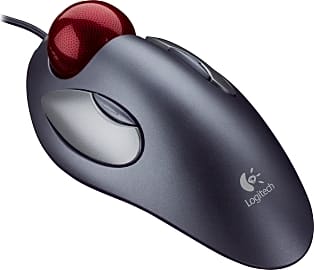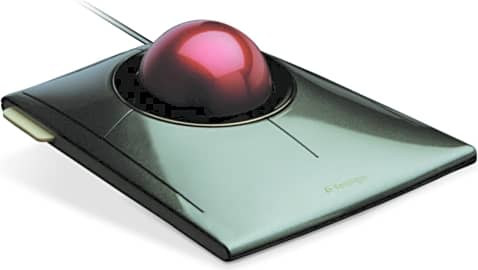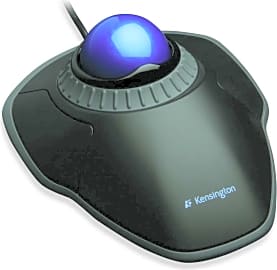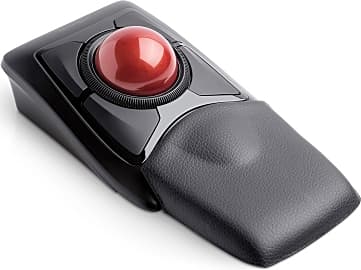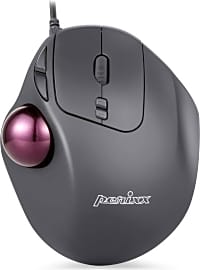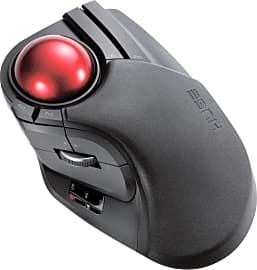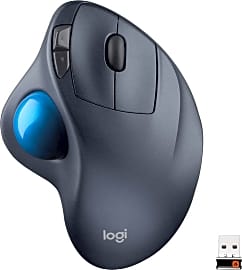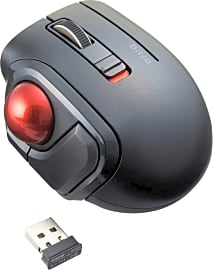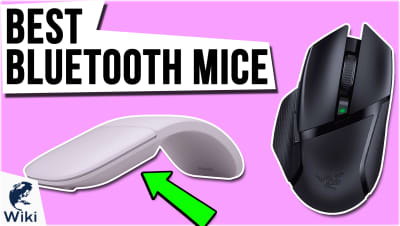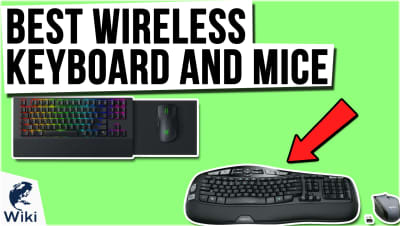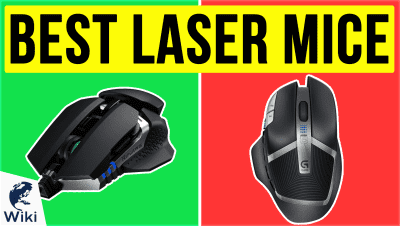The 10 Best Trackball Mice

This wiki has been updated 39 times since it was first published in August of 2015. Whether you have limited desktop space or just prefer the action of a rolling orb, one of these trackball mice will let you zip around your computer's screen quickly and accurately without having to move your arm across your work surface. Many users find that these designs help to alleviate hand and wrist strain, and there's a variety of configurations available to suit different needs. When users buy our independently chosen editorial picks, we may earn commissions to help fund the Wiki.
Editor's Notes
December 03, 2020:
In this update, we've removed the Yumqua Y-10W, the Elecom Deft Pro, the Speedlink Aptico, and the Microsoft D68 Explorer and replaced them with models that we felt offered better value. We've also updated the listings for the L-Trac Glow and the Elecom Huge and rearranged our ranking based on all the new additions.
The Elecom Compact is one of the company's latest offerings and is made in both finger-operated and thumb-operated designs. The Perixx Perimice-517 is a thumb-operated ergonomic option that comes in either a wired or wireless version. The ambidextrous Kensington Expert is a finger-controlled option and is also available either wireless or corded.
We've included the Logitech M570, which still receives high praise despite being officially replaced by an updated model, the Logitech MX Ergo. While the Ergo offers more features and updated support, the Logitech M570 is a cost-effective option and a great choice for those looking for a basic trackball. The Elecom Huge has likewise been replaced by newer models, but its solid performance and larger design make it continue to be one of the best options for those with bigger hands.
Finally, we would be remiss if we didn't address the removal of the Microsoft D68 Explorer. Microsoft's legendary creation has somewhat of a cult following due to its comfort, overall ease-of-use, and reliability. It can still be found on occasion, and its scarcity will likely only increase its value. While it is possibly one of the best trackballs ever made, its lack of availability and the extremely high price of available models has necessitated its removal from the list.
May 08, 2019:
Most trackball mice fall into one of two layouts, each with their advantages and disadvantages. The first, the finger-controlled configuration, is one in which the trackball is placed in the center of the unit. An example of this layout is the the Kensington Slimblade. This ambidextrous design can be used by both right- and left-handed folks, and often boasts better precision than the equally popular thumb-controlled configuration. Using the Speelink Aptico as a visual example, you can see that this latter design resembles the layout of traditional mice, and it is often preferred by those who still use a mouse in their daily work. It is often lighter than its finger-oriented competitor, and many find it to be more comfortable, though nothing can be objectively said about which layout is better. Both designs usually provide a few customizable buttons that can be assigned to perform different click-functions. Aside the aforementioned models, the Kensington Orbit, the Elecom Deft Pro, and the Elecom Huge also have pretty good assignable buttons.
Though our #1 pick, the Microsoft D68 Explorer, seems insanely priced, somebody out there may have reason to justify such a hefty cost. After all this time, it's yet to beaten in terms of engineering. Its precision, comfort, and durability are unmatched, and for some, such a combination is priceless.
Keeping It Comfortable
By contrast, a traditional sliding mouse has to be lifted and re-positioned should a user run out of room to move it across their desk.
If you spend a lot of time working at a computer station, you're going to be forced to use either a mouse or trackpad for the entire day in order to navigate your screen. This can get tiring after a while because you're constantly having to move your wrist and arm back and forth to get the pointer where you need it to be. A trackpad can relieve some of the strain from your wrist through the use of your fingers to move the cursor and pointer, but not all of it. That said, if you're a person who suffers from arthritis or chronic pain, you'll need a solution that keeps your wrist from being overworked. If you simply don't care for a conventional mouse with a clicker, then the trackball mouse is a good alternative.
A trackball mouse is a pointing device that consists of a freely-moving ball held in place by a socket with sensors for detecting its movement and rotation. A user can move the trackball with their fingers, thumb, or the palm of a hand. Unlike conventional computer mice, the trackball has no limits to its movement. A user can continue rolling the ball, even when the screen pointer has nowhere else to go. By contrast, a traditional sliding mouse has to be lifted and re-positioned should a user run out of room to move it across their desk.
A trackball offers several ergonomic advantages. Firstly, its usage encourages the freedom, flexibility, and independence of the thumb and fingers from the wrist and arm. It is often molded to support the wrist during operation, which provides extra cushioning and limits the possibility for pain or injury from extended use.
Unlike traditional mice, trackballs are not limited to use only on flat surfaces, as the ball can freely rotate on its axes while being held in place by its socket. This means it can be moved in virtually any direction without having to slide the entire mouse across a desk's surface. Such an application makes this mouse particularly useful on small desktops where space is limited. Additionally, it can be used effortlessly with a laptop from most any angle without impacting its accuracy. This comes in handy when using a laptop on unstable surfaces, such as a bed or on a boat.
One of the most popular applications for the trackball mouse includes the gaming industry. Because there is no requirement for a mousepad, a gamer experiences improved accuracy when playing first-person shooters, role-playing (RPG), and arcade-style games through the use of quick-spinning trackball action.
Large trackballs are used at computer stations with sonar equipment, at radar consoles in air-traffic control rooms, and even as part of computer-aided design workstations where precision and graphical work is common.
Trackballs are easily built into public internet access terminals and are more difficult to steal and vandalize than a traditional mouse.
A Brief History Of The Trackball Mouse
The original concept for the trackball was invented in 1946 by Ralph Benjamin. While working for the British Royal Navy Scientific Service, Benjamin helped to design a radar plotting system called Comprehensive Display System (CDS). Benjamin's project used analog computers to predict the future positions of target aircraft based on data points that were provided by a user with a joystick. Benjamin felt that the use of a joystick could be improved upon, so he invented a ball tracker system which he called roller ball. Although the concept was patented in 1947, only a prototype of the device was ever developed and it was kept a military secret from that point on.
Benjamin felt that the use of a joystick could be improved upon, so he invented a ball tracker system which he called roller ball.
Although Benjamin can be credited with the original idea for the trackball, the first practical application for this type of mouse was invented in 1952 by Canadian engineers Tom Cranston and Fred Longstaff as part of their effort to design an improved target coordination system called Digital Automated Tracking and Resolving (DATAR). The DATAR system was similar to Benjamin's 1946 concept, but the difference was in the use of a digital computer for target calculations instead of analog. The DATAR system made use of a Canadian duck pin bowling ball weighing several pounds, which represented the first use of a trackball to move a cursor.
During the 1960s and 1970s, trackballs continued to evolve as high-cost, high-precision instruments for military use, each with a diameter range between two and four inches. By 1980, it was introduced into the gaming industry in the form of Atari's Missile Command. In 1989, Logitech introduced its first trackball called the Trackman. Logitech and Microsoft also launched trackballs designed for portable computers in 1991. With the evolution of more advanced optical tracking technology and standardized electronic interfaces (i.e. USB), the popularity of the trackball grew because it was easy to use as a plug-and-play device. It was also interchangeable with a traditional computer mouse.
Finding The Best Trackball Mouse
The trackball is ideal for comfort and practicality for your computer station. For that reason, any trackball device offering additional wrist cushioning (detachable or otherwise) is usually a good thing. This is definitely true if your motivation for investing in one is to relieve wrist pain and fatigue.
If you consider yourself a gamer, a trackball can be a godsend for playing involved first-person shooters, fighting, or racing games that require a lot of mouse precision and freedom to control what's on the screen.
Some of the best trackballs are wireless and offer up to a thirty-foot range, which can definitely come in handy if you're a graphic artist working on a large monitor and you require some distance to see and manipulate your work.
The trackball itself should also be easy to remove for cleaning, as it's inevitable that you'll spill something on it sooner or later.


